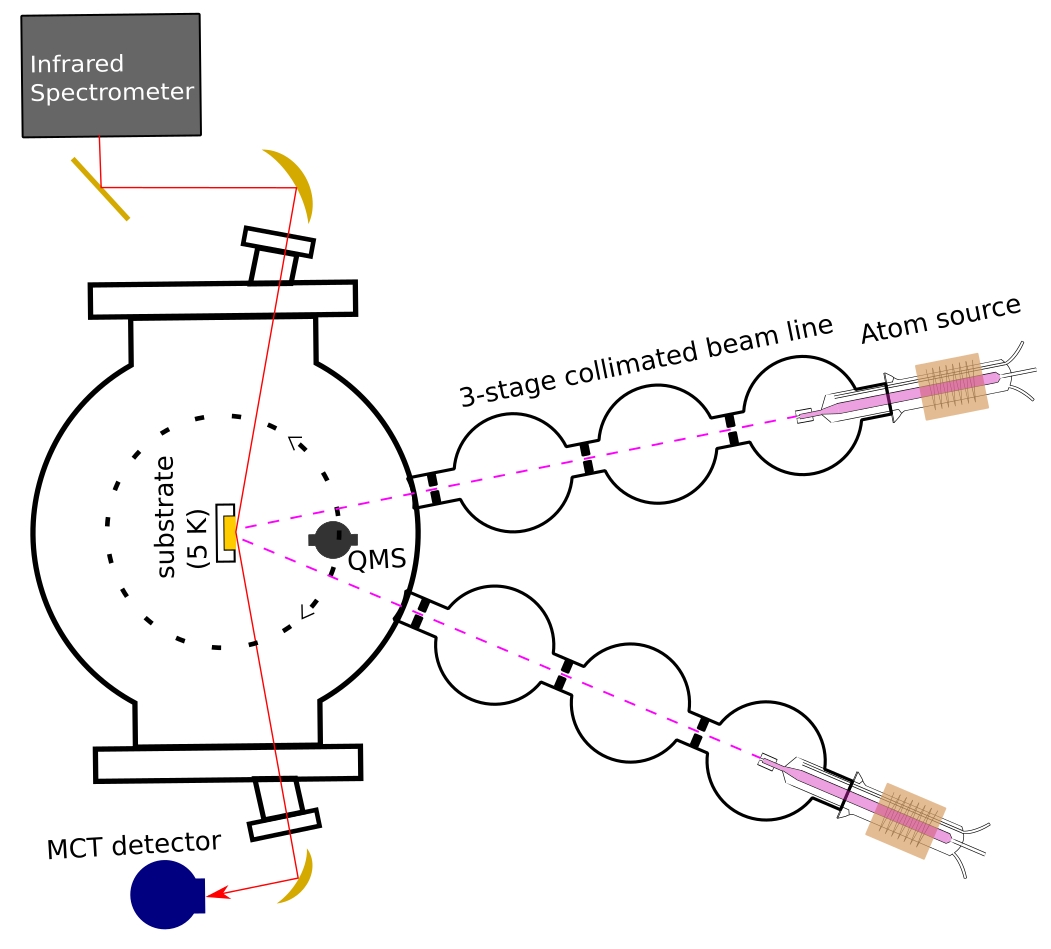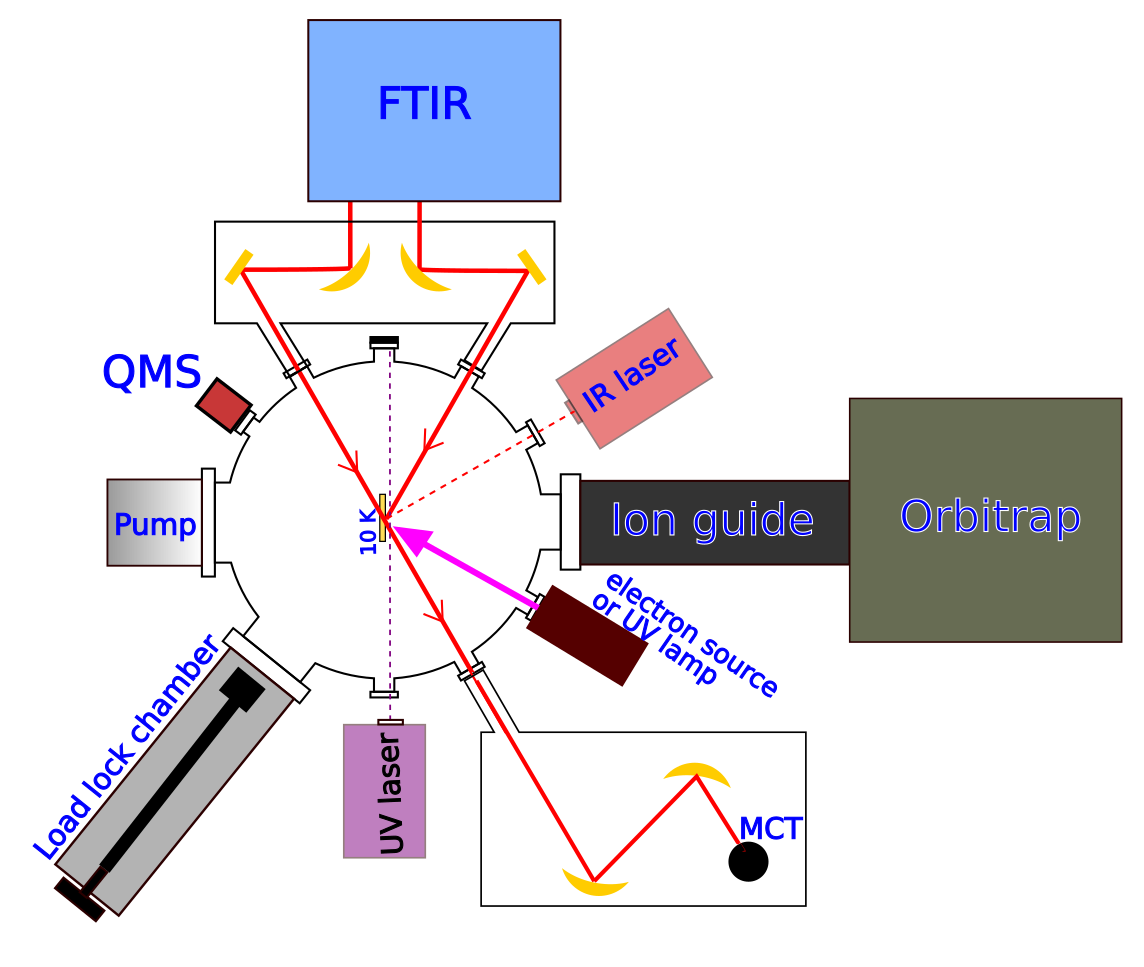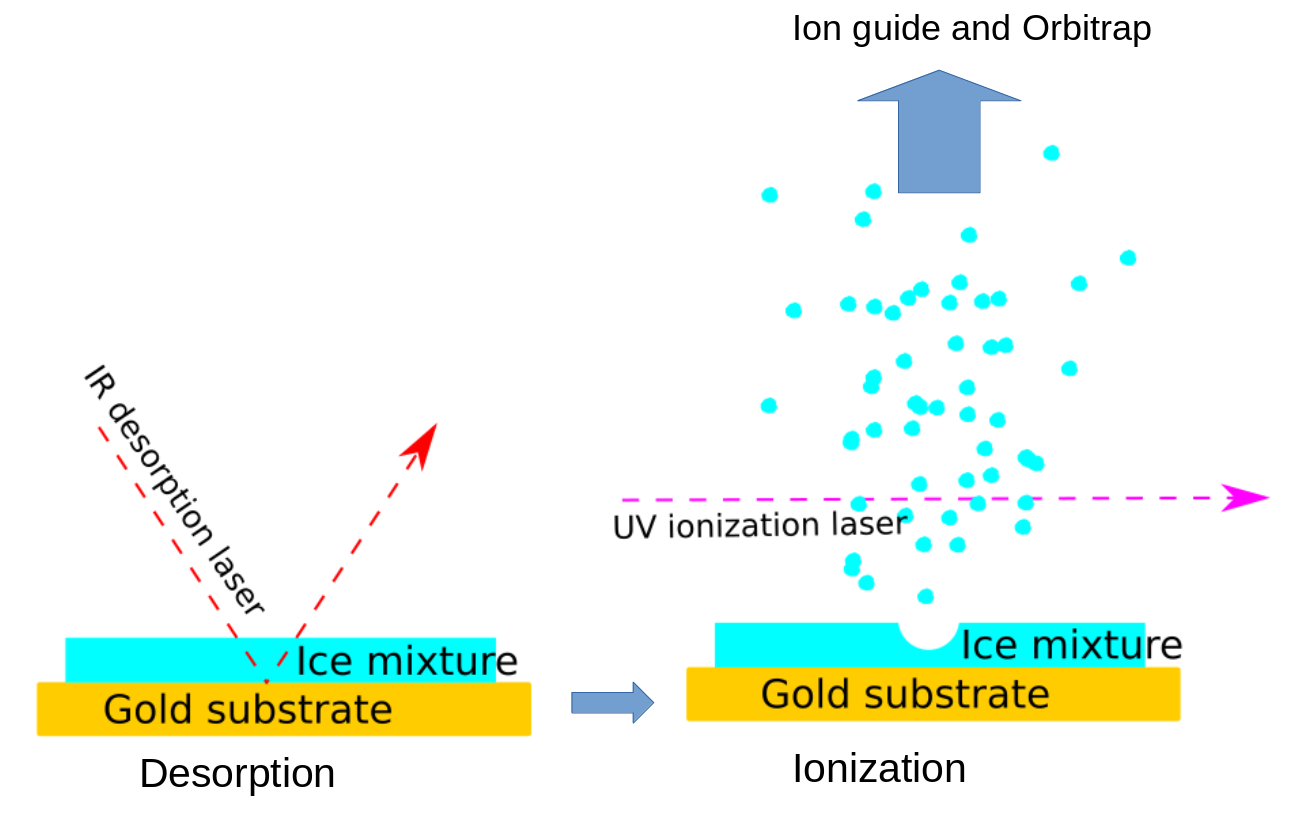Experimental Setups
Setup 1
This setup consists of a main UHV chamber and two 3-stage differently pumped, highly collimated beam lines. Each beam line houses a radio-frequency dissociation source that can produce hydrogen or oxygen atoms. Reactants (atoms or simple molecules) are deposited onto a cold substrate at cryogenic temperatures, and the reaction products on the surface are detected by a quadrupole mass spectrometer or a Fourier Transform InfraRed (FTIR) spectrometer. The setup was acquired from Syracuse University Astrophysics and Surface Science Research Laboratory (PI: Prof. Gianfranco Vidali) in 2020.

Main features of setup 1
- Ultra high vacuum pressure in the main chamber
- Two 3-stage highly collimated atomic/molecular beam lines
- FTIR in Reflection Absorption Infrared Spectroscopy (RAIRS) configuration
- Hiden Quadrupole mass spectrometry (QMS) mounted on a rotary flange
- Sample temperature controllable between 5 K and 400 K
- Computer automated gas deposition
- Capability of beam modulation and time-resolved measurements
Setup 2
The second experimental setup is devoted to the identification the complex organic molecules, particularly prebiotic molecules, from the irradiation products of mixed ices. It simulates the irradiation processes that occur in the ice mantle covering cosmic dust grains and on the surface of icy objects in Solar System.


Main features of setup 2
- Thermo Fisher Q Exactive Orbitrap mass spectrometer
- Tunable pulsed infrared laser for ice desorption
- Pulsed UV laser for ionization
- Loadlock chamber for easier sample handling
- Ultra high vacuum pressure in the main chamber
- Quadrupole mass spectrometry (QMS)
- FTIR in either reflection or transmission configuration


